The South Downs Way 50
Posted by Ed on April 11, 2023
This year, my running calendar has been defined by two major goals, both of which I hope to achieve before I turn 30 on November 7th:
- Finish a 100-mile race (fundraising for the Peace Hospice in memory of my dad)
- Run a sub-3 hour marathon
Achieving either would require a substantial block of focused training; doing them both in the same year means thinking very carefully about how best to go about things. Knowing that my debut 100-miler could only be one race – the South Downs Way 100 in June – meant that the first half of 2023 had to be dedicated to building the kind of aerobic fitness and strength necessary to perform well at ultras, before pivoting over the summer to more marathon-specific speed work.
Since January, then, I’ve been targeting two things: consistent miles, and regular strength work in the gym. With the help of my coach, Chris Dyke, I’ve managed to avoid any major blowups, negotiating niggles to achieve a solid bank of reasonably high mileage in what was a long, miserable winter.
Aside from regular strength work (principally made up of squats, deadlifts, and bench presses), the main difference to my training having a coach has made has been the redistribution of miles across my week. In previous years, an 80k week might have involved 40 weekday kilometres, followed by a 30k long run on Saturday and a 10k on the Sunday. This year, I’ve only done a handful of runs longer than 25k or shorter than 10k – instead, 12k run commutes and lots of steady running in the 10-15km range have been my bread and butter.
I’ve not found it easy dealing with the sustained fatigue this approach has induced, but I could tell even from mid-February the difference this kind of schedule was making, and in March I managed a 40-second 5k PB (17:18) that confirmed I had made substantial gains.
The South Downs Way 50 was a chance to quantitatively gauge just what a difference this fitness had made to running ultras. Having run the race in 2021 – my first official 50-miler – I was curious to see just what kind of an improvement I could make on my time of 9:12. I gained almost 90 minutes at the Wendover Woods 50 in 2022 compared to 2021, so I knew that a sizeable PB was on the cards; but I also knew this was meant to be a warm-up race, and the main goal was to walk away feeling confident that finishing 100 miles was possible.
The race
After a suitably carb-dense dinner at Pizzaface in Worthing and a decent night’s kip in our Airbnb, my buddy Mark and I were driven to the start line by our friend Aidan, who had opted not to start the race due to an injury but came down for the weekend nonetheless. I bumped into Berkhamsted-based Jason at the start line, a fellow Runaway fanboy, and we exchanged a few remarks about who would beat who. Jason is training for UTMB – yes, the full sch-bang – and whilst I could outpace him at a Parkrun, he could just about kick my ass at anything steeper and more technical than Wendover Woods. I was genuinely curious to see who would fare better at this event.

Following a few opening remarks over the megaphone by James Elson, the race was soon underway, and we began to climb out of Worthing and onto the downs. Jason almost immediately disappeared, running at a pace I wasn’t prepared to commit to, and I was on my own. Except for the crowd.
When I first ran this event, the staggered start necessitated by COVID restrictions meant there was no herd with which to run, so it was actually quite a task this year to stay focused on running my own race right from the beginning. 50 miles is a really long way – so long that in the first hour or two, you can’t really gauge how anyone is faring. But I was still surprised at just how many people appeared to be pushing it right from the off, especially given the long uphill that defines the start of the course.

Another surprise was the weather. After months of rain and overcast conditions, we were treated to beautiful blue skies and bright sun – but this meant it felt quite hot, quite quickly. I found my sunglasses were steaming up as the morning sun evaporated the moisture on the ground, and my face was soon dripping with sweat despite the temperature floating around 12 degrees.
In a bid to stay cool, I soon removed my gloves, sleeves, and even my trusty Ugoku cap. Thankfully, the sun did ease off, though the weather anomalies continued – we were soon treated to some magnificent cloud inversions, the likes of which I’d only ever seen before in high mountains. I can only imagine this had something to do with the aforementioned excessive rain of the previous weeks being boiled off by the sun. It made for a magnificent start to the race, and I was reminded just why I love this course so much.
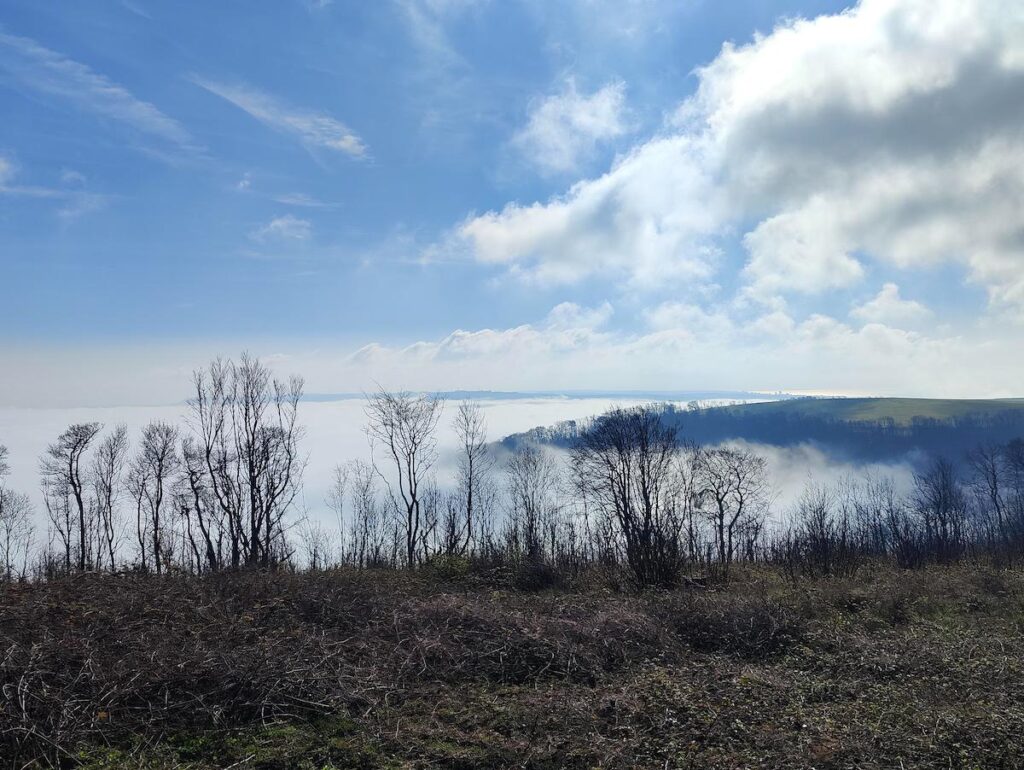
We soon began a long descent through these low-lying clouds into the valley at Botolphs, where the first aid station was waiting for us at 18km. Coming down the hill I found myself running alongside a tall, bearded runner in a colourful shirt, whose name I later learned was Rob but in my head was simply called ‘Viking’. We chatted about the weather, about running – this was Rob’s first 50-miler – and before we knew it we had cruised into the aid station in around 1 hour 42 minutes, a full 17 minutes faster than 2021.
At Botolphs I was greeted by volunteer and fellow South Londoner Ally, and also bumped into Adam, an Enfield-based chum who was, by his own admission, well ahead of schedule but looking strong. Knowing just how much of a difference a good aid station strategy can make, I opted to fill one water bottle, grab a handful of food, and make a start on the long climb up the valley. I think I was probably stood still for less than 30 seconds.

Although less than a quarter of the way through, I was definitely feeling more fatigued than I might have expected by this point. I think there were two reasons for that. One is that I hadn’t tapered for this race; I’d actually undertaken a fastpacking trip only the weekend before along the South Downs Way from Winchester, carrying my tent and camping overnight. Not tapering allowed me to at least partially simulate the fatigue I’ll experience at the 100-miler in June.
The second reason I was feeling tired, though, is that I was actually pushing quite a bit harder than I ever had in a runnable 50 miler. Unlike Wendover Woods, almost all of the climbs on the South Downs Way are runnable, but in 2021 I hardly ran any of them, opting for a conservative approach befitting of my first 50-mile race. This year, the fitness and strength accumulated over the past 24 months meant my legs felt springy enough to trot up many of the climbs at a decent pace without sending my heart rate into the red. Nothing aggressive, but certainly a few minutes per kilometre faster than walking.
The extra exertion didn’t worry me – I learnt at the Ring of Steall last year that you can push a lot harder than you might think on a multi-hour effort, so long as you fuel properly and use the flats and downhills to recover. If anything, I was curious to see just how long I could sustain this effort.
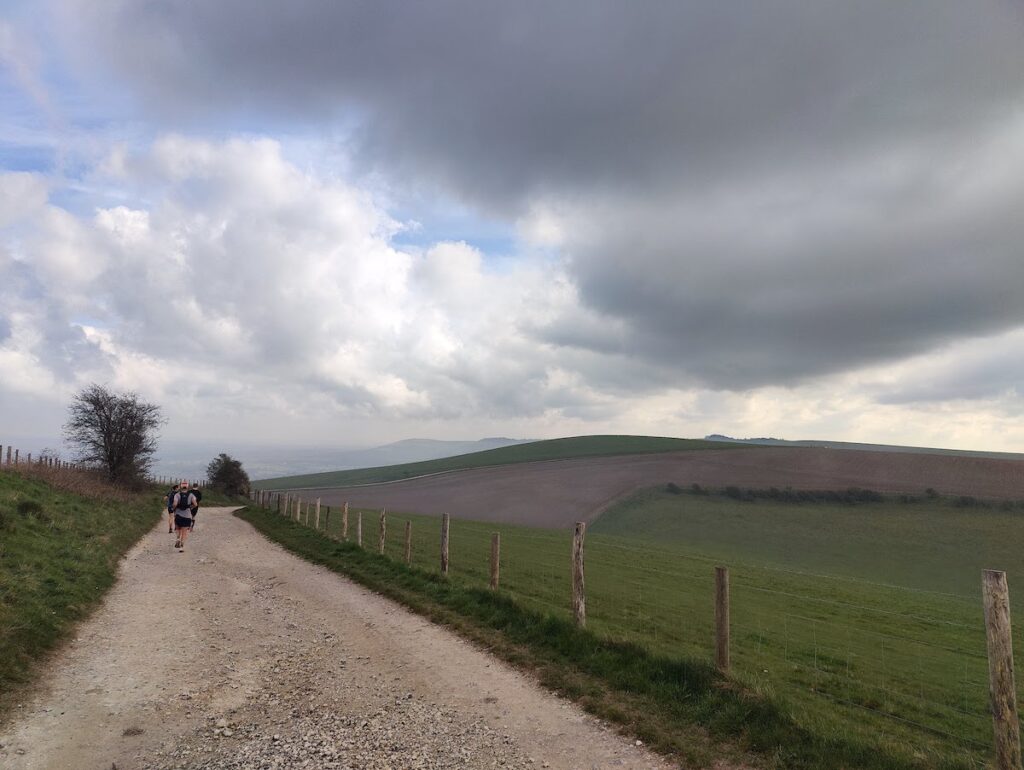
The next section of the race passed with relatively little drama, the morning sun giving way to overcast conditions that made the miles easy going. Before long I found myself flying down the familiar steep descent into Housedean Farm aid station, past the halfway point and 40 minutes ahead of 2021’s time.
In the last few miles, a group of guys had coalesced around a similar pace – there was Rob, the aforementioned Viking warrior; Ian, a fellow Hoka Tecton-clad runner also debuting at the fifty mile distance; Fred, a Frenchman living in North London; and Gavin, whose distinctive Ciele hat I’d been noticing ahead of, alongside, and behind me since the beginning of the race.
So it was this merry band careened out of Housedean and up the long, heartbreaking climb up and around the giant bowl that is Castle Hill. Whilst I was in front of the pack for much of this ascent, it wasn’t so much that I was leading the charge as gauging what was reasonable. I knew that walking out a long climb was a surefire way to burn off precious minutes, and wanted to ensure the pace stayed relatively hot.
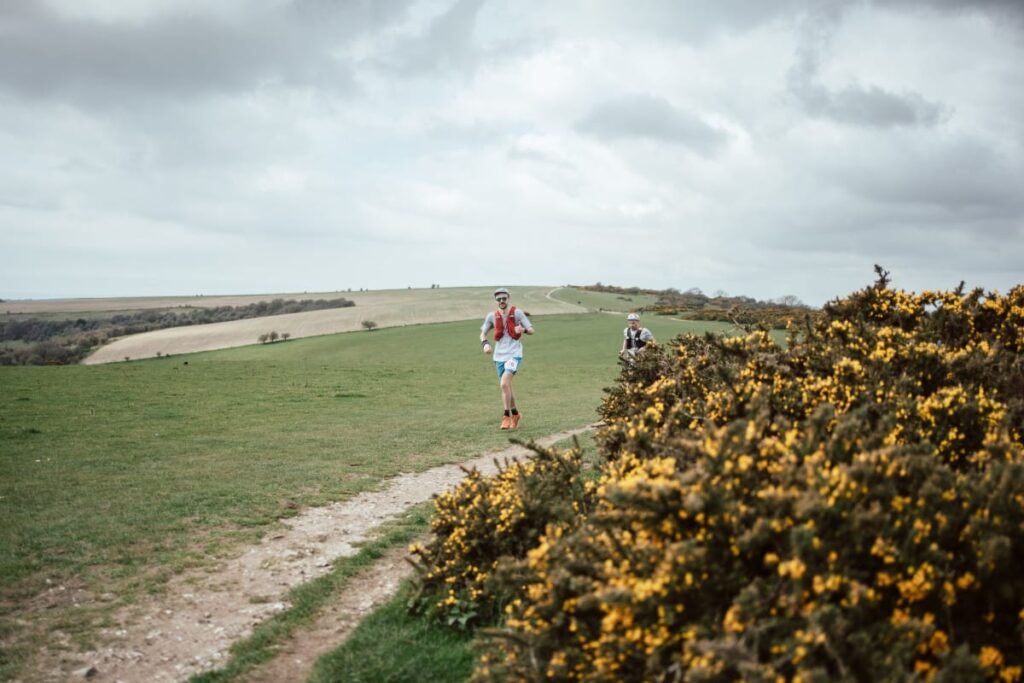
Rob and I managed to pull away from the pack at the top of this climb, I was able to take advantage of the long, runnable ‘yellow brick road’ descent and put down some fast kilometres. Dropping into the farm just before Southease, which I always think of as ‘Death Valley’ thanks to its parched chalk sun trap feel and high valley walls, Frederic, Rob and I did a good job of keeping each other going, none of us wanting to be the one to let the side down. A gentleman by the side of the trail who I think was Peter Windross offered some words of encouragement: “Stick together, keep it up.” And so we did.
At Southease I made a point to down half a litre of water before filling up both bottles again, as I could tell I was toying with dehydration. Plus, I knew what was coming – probably the worst climb of the whole race, not for difficulty or steepness but for sheer length. It just never. flipping. ends. Rob’s colourful shirt in the distance kept me motivated to break into a shuffle run where I could, but nothing could hide the fact that we were truly in the belly of the beast, and things were starting to hurt.
Thankfully, Fred was still with me, and together we managed to find a really good groove on this section. Of course, it didn’t feel good at the time – it felt like what it was, a couple of semi-broken souls doing their best to shuffle along the ridgeline. But I can guarantee that, alone, I wouldn’t have fared anywhere near as well, and together we covered the 12 kilometres from Southease to Alfriston almost 10 minutes faster than I managed in 2021.
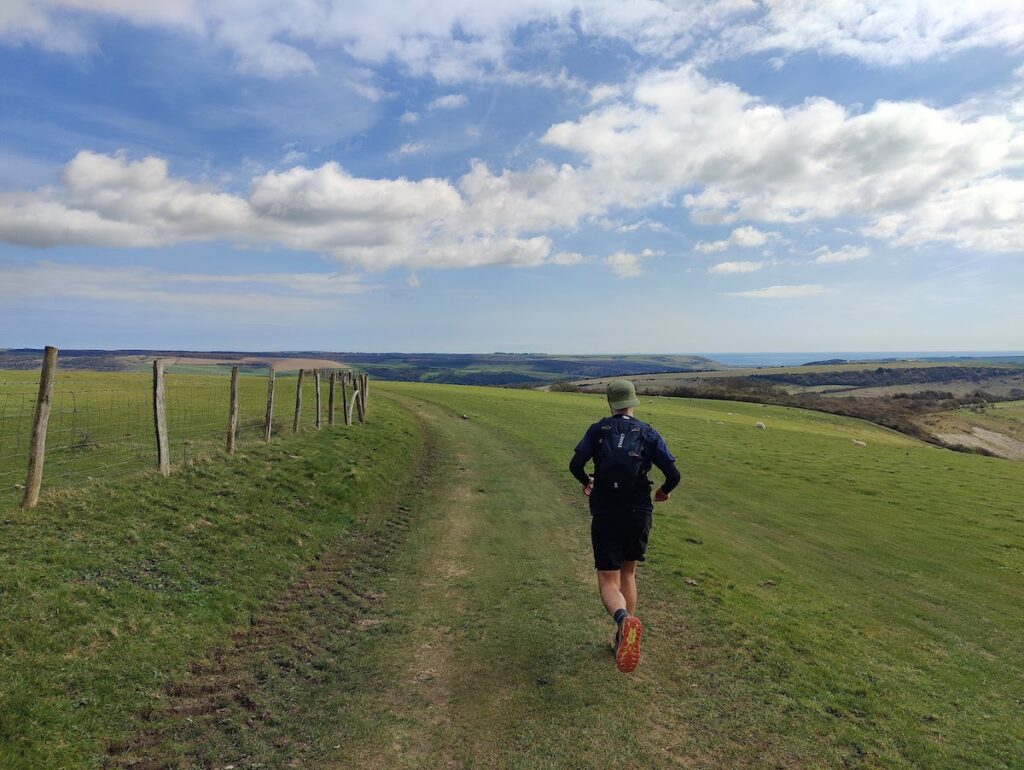
On the descent into Alfriston, Fred seemed to get a second wind, and sped off ahead. I was content to jog it in, though I was pleased to still be managing around 5-minute kilometre pace with over 65 kilometres in my legs. Psychologically, getting to Alfriston was huge, as I knew that only two steep climbs separated me from the finish line in Eastbourne. At this point in the race, steep climbs are far preferable to the painfully runnable ascents that characterise most of the course – anything for an excuse to walk a little bit.
This psychological lift was exaggerated as when, I approached the Alfriston village hall, I spotted none other than Jason making his way out. “How are you doing?” he asked me. “F*cked,” was my honest response. He headed onwards, but I made a point of filling up on water, and grabbed a few handfuls of crisps before immediately heading out and chasing him down along the river.
My efforts were in vain, however, as although I did manage to catch up to him, the steep climb up Windover Hill kicked in, and I simply couldn’t keep up. Jason’s part mountain goat, I think, and my hiking legs were all but extinguished by this point (the previous weekend’s fastpacking trip probably didn’t help.) It was all I could do to keep him in my sights, but when the trail finally flattened out, I was able to down a gel, pick up a decent pace, and overtake him.
Together we cruised into Jevington, the final aid station. I filled up on water once again, but didn’t set foot in the actual aid station. Jason, meanwhile, was muttering something about ‘flavoured water’, which the friendly volunteers managed to translate as ‘squash’. He went inside, and before I knew what to make of it, I was on my own again. Except, of course, for Viking – sorry, Rob – who was just ahead of me as I ascended the final climb out of Jevington. He was moving incredibly well at this point, still running strong uphill, and I knew there was no chance of me catching him.

On the climb out of Jevington, I was overtaken by a purple-clad woman I later found out to be Charlotte Baker – “Do you know what place you’re in?”, I asked her. “Third,” came the response, “but they’re not far behind.” Charlotte was running strong, but I managed to overtake her again once the trail flattened out, and shared a few minutes with an red-clad runner before hitting the wonderful trig point which signifies the end of all the race’s uphill and the start of the long descent into Eastbourne.
Up until this point, I’d avoided doing any kind of maths with regards to my finish time – I was very content with the fact that I was, by now, over an hour ahed of my 2021 pace. But as I descended the ‘gully of doom’, I realised that what I had previously thought to be a pipe dream was, in fact, achievable – sub-8 hours. All it would take, I reasoned as I stumbled out of the gully and onto the streets of Eastbourne, was to run the final 3.6 kilometres in 15 minutes. I couldn’t quite figure out what exact pace this would necessitate, but I knew it was faster than five minutes per kilometre. On any other day, this would be no problem, but, to quote Laz Lake, it was a bit of a ‘test of manhood’ to bite the bullet and commit to giving it everything.
Thankfully, despite their protestations on the climbs, my legs were holding up well, and I was able to shift into a solid fourth gear. The traffic gods were on my side, too, and I avoided any awkward road crossings or traffic light stops as I sped through the town. I passed Rob, who gave me some words of encouragement. “Subeightsonthecards…” I spluttered, trying to alert him to the possibility of securing a sub-8 hour finish time, but probably just confusing the shit out of him.
Coming into the athletics track car pack, I caught up with the red-clad runner, and we shared a moment of celebration was it became clear that the time was within reach. “Sub-4, man!” he exclaimed. “No, sorry – sub-8!” Entering the track, I glanced at the clock and saw that it read 7:57 on the dot – three minutes, then, to run less than a lap of the track. Pleased as punch, I cruised through those final 300 metres and crossed the line in 7:58:42, in 28th place out of 385 participants.
In the end, Fred, Ian, myself, and Rob all finished under eight hours, and within three minutes of each other, in that order. Gavin, unfortunately, had a difficult final quarter, but still managed a brilliant time of around 8:30, whilst Jason brought it home in a stonking 8:05.
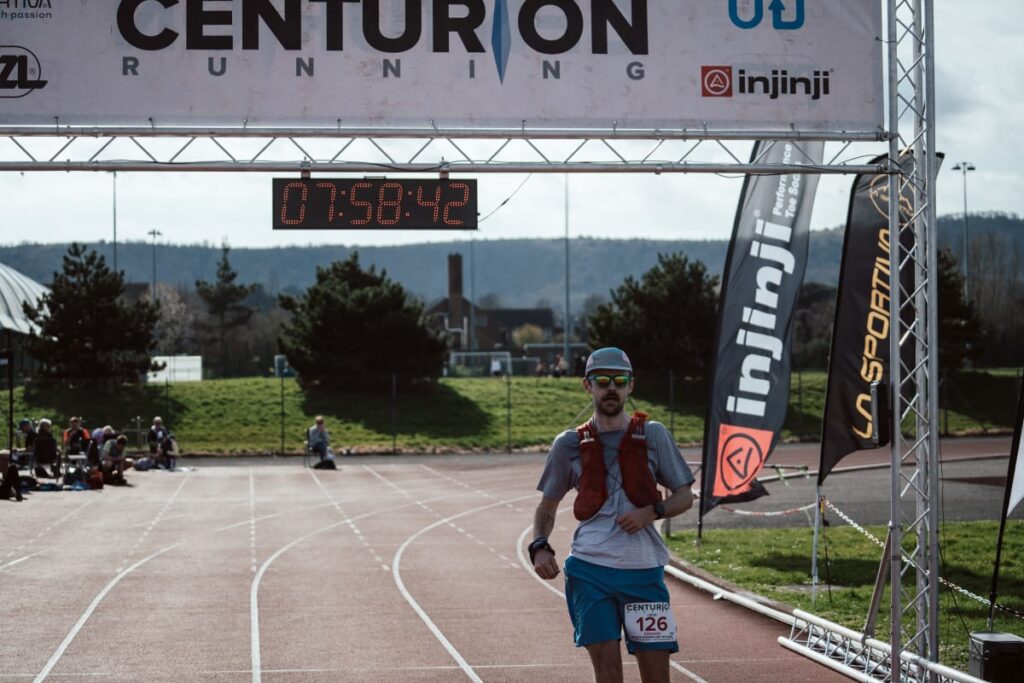
Takeaways
If the goal of this race was to gauge how much I’ve improved in the last two years, the short answer is: 14%. That’s the difference between my 2021 finish time (9:12) and my 2023 time (7:58).
If we’re comparing places rather than times, I’ve also improved substantially: 2021 I was just shy of being in the 75th percentile of the race, meaning I was faster than 75% of the participants; in 2023, I was in the 93rd percentile (despite more than 50 extra runners taking part this year). The blue-sky conditions were similar enough both years that I trust this data as a reliable indicator of my improvement.
In a separate blog post, I’ll dive into the numbers in a bit more depth. For now, I’m content in the knowledge that I’ve made solid gains, and have a couple of months in which to continue to improve before tapering for the South Downs Way 100, which I’m running to raise funds for the Peace Hospice, who provided vital end-of-life care for my father at the beginning of 2023.
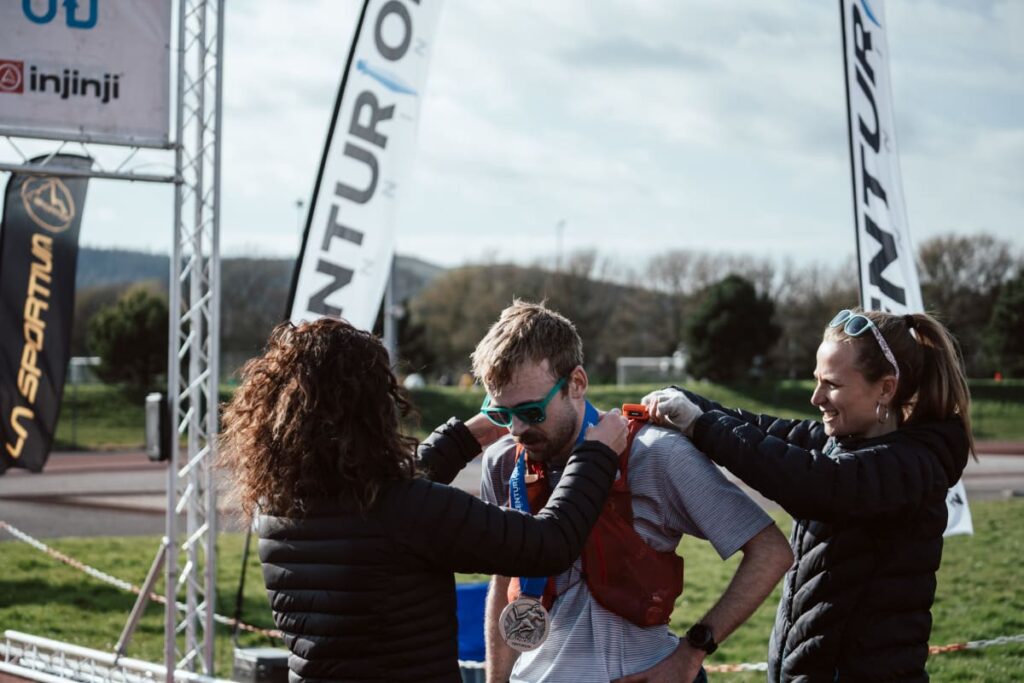
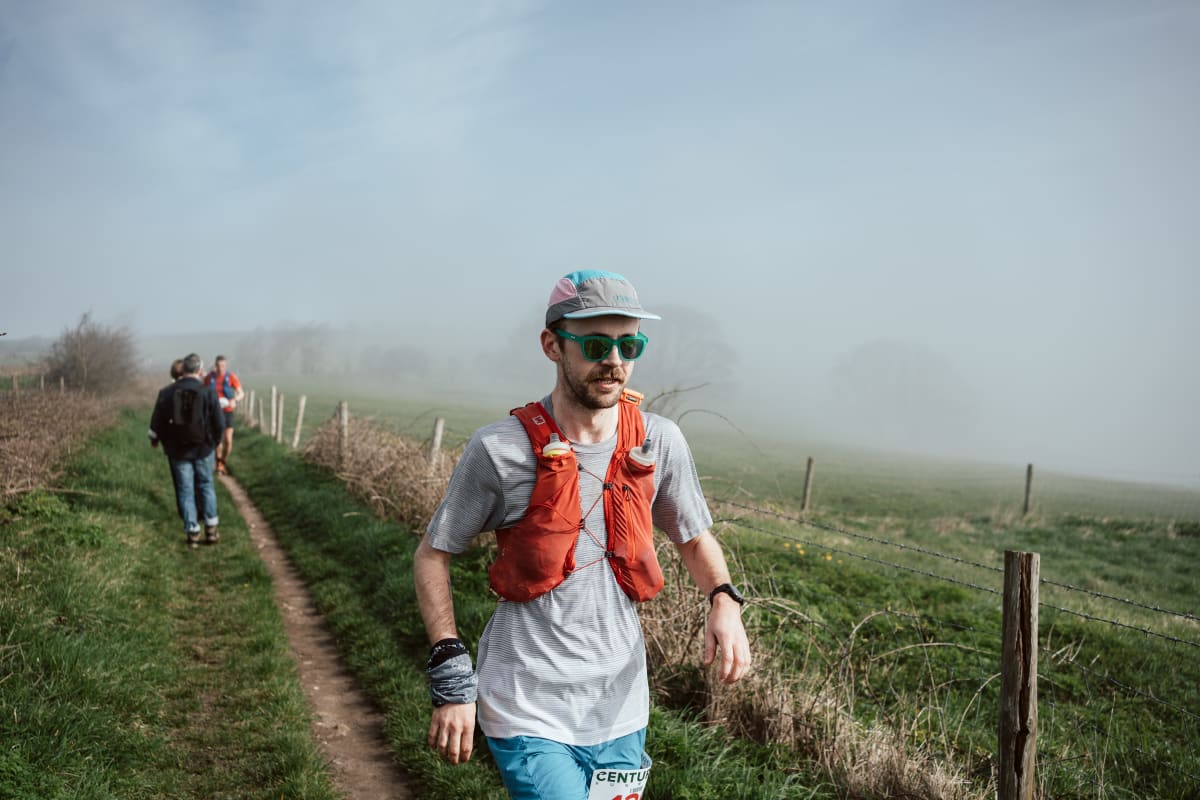
One comment on "The South Downs Way 50"
Jason
April 11, 2023 at 7:28 pm
I’ll get you next time, Gadget!
Comments are closed.